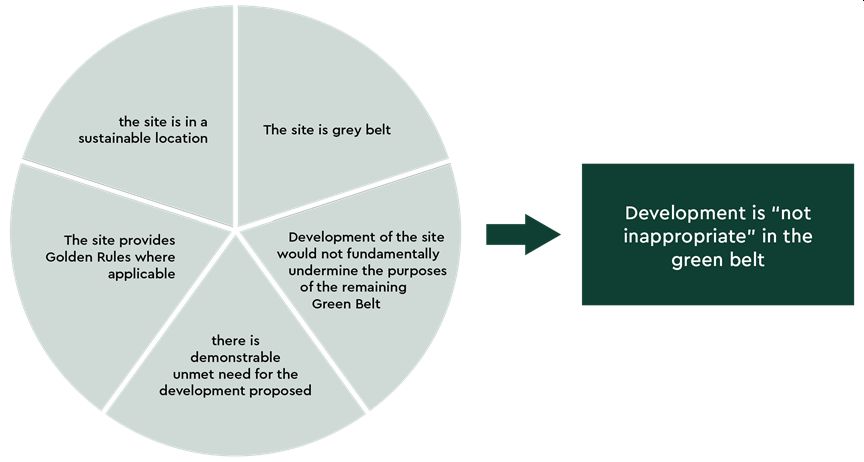The Planning and Infrastructure Bill
On 11 March 2025, the Government published the heavily anticipated Planning and Infrastructure Bill (the "Bill"). The Government (and the broader property sector) will be hoping to 'unlock' development, and the Bill ties together a number of policies which had originally been outlined in the Government's manifesto prior to the General Election last summer, with a view to streamlining the planning system.
Why is this Bill significant?
Taken together with the recent changes to the National Planning Policy Framework (the "NPPF"), which we discuss here, the policies set out in the Bill form the cornerstone of the Government's efforts to reform the planning system. Planning has, perhaps unexpectedly, been thrust into the spotlight and found itself at the heart of efforts to unlock growth and kickstart the economy, featuring prominently in recent speeches given by the Prime Minister and Chancellor.
What's in the Bill?
The Bill contains various changes for the planning system and local authorities, including the following notable changes:
1.1 Compulsory Purchase Order ("CPO") reforms
As promised in Labour's 2024 manifesto, the Bill will remove 'hope' value (the value attributed to the prospect of planning permissions for the relevant site) from the CPO process. The Government guidance on the Bill notes that under the current CPO process, landowners cause delay due to their unrealistic expectations on compensation. Therefore, it is expected that the CPO process will be accelerated if landowners' expectations are lowered as a result of the valuation only taking into account market value without the prospect of consideration or debate in relation to hope value.
1.2 Local Planning Authorities ("LPAs")
The Bill looks to make a number of procedural changes which will affect LPAs, including:
- the requirement that all planning committee members must have undertaken a minimum level of training before they can make any planning decisions. The Government will be hoping that by increasing and standardising the training received by planning committee members, planning decision-making will be improved and will be more coherent across the country. Query, though, whether this will make much of a difference in practice, given that a large number of members on Planning Committees already receive training.
- the Secretary of State will have the power to sub-delegate the setting of planning fees to LPAs, however the fee income received by the LPAs will be ringfenced for spending on the LPA's relevant planning function. The Secretary of State will also have oversight of the fees set by LPAs and will have the power to intervene if the fees are deemed to be excessive or unjustified.
- It is 'Back to the Future' for planning again with a retracing of steps towards (much missed) regional planning with the introduction of a duty on combined authorities, combined county authorities and uppier-tier county councils and unitary authorities to prepare a spatial development strategy ("SDS") for their area. The Government guidance indicates that the Government views cross-boundary collaboration between authorities via SDS as a potential means of unlocking development and effectively planning cross-boundary developments.
1.3 Development Corporations
The Bill will enable development corporations to be deployed more flexibly and across a wider variety of geographical areas. Development corporations will also be required to cooperate with local transport authorities and the infrastructure to be delivered by development corporations will be standardised. These new powers and obligations for development corporations have been introduced with a view to the new towns which the Government is proposing to deliver over the next few years, with development corporations being a key tool for delivering new towns.
1.4 NSIP reform
The Bill will reform the Nationally Significant Infrastructure Project ("NSIP") regime to require national policy statements to be updated every 5 years and to streamline the consultation requirements of NSIPs. The Bill will also reduce the scope for judicial review of NSIPs, helping to increase the likelihood of successfully delivering key infrastructure projects.
1.5 Reforms to the Highways Act 1980
The Bill will make a number of amendments to the Highways Act 1980 to improve "the efficiency of the delivery of road infrastructure schemes". Most notably (and perhaps controversially) the Bill will establish powers to enable the compulsory temporary possession of land to reduce delays to infrastructure delivery. It is encouraging to see the Government recognising that there are wider challenges to overcome for new development beyond those which are solely the preserve of the planning system.
1.6 Nature Restoration
The Bill establishes a Nature Restoration Fund, administered by Natural England, to which developers can make contributions as an alternative way to meet certain environmental obligations. Natural England will be allowed to develop Environmental Delivery Plans ("EDPs") for certain protected sites and species. Where EDPs are in place, it is understood that developers would be able to utilise the EDPs instead of having to undertake their own additional environmental assessments. The Government is hopeful that these measures will stop environmental considerations slowing down development, whilst delivering positive environmental outcomes. Time will tell, however whether the right balance is struck between environmental protection and enabling development.
Green Belt Planning Practice Guide
Following the publication of the long awaited updated new version of the NPPF in December 2024, the Government has recently published a new Planning Practice Guide ("PPG") regarding the Green Belt. The PPG on the Green Belt is intended to aid the interpretation of the NPPF, with additional clarification added to help LPAs and developers determine whether land within the Green Belt may fall under the recently introduced concept of Grey Belt. The new Grey Belt has kept applicants, LPAs and Inspectors very busy in recent months, so further guidance to aid interpretation is very welcome.
What is Grey Belt land?
We previously discussed the introduction of the concept of Grey Belt for developers here, but by way of reminder, 'Grey Belt' is defined as land in the Green Belt comprising previously developed land and/or any other land that, in either case, does not strongly contribute to any of purposes (a), (b), or (d) in paragraph 143 of the NPPF. 'Grey Belt' excludes land where the application of the policies relating to the areas or assets in footnote 7 (other than Green Belt) would provide a strong reason for refusing or restricting development".
Taking each relevant sub-paragraph of paragraph 143 of the NPPF in turn, the PPG has expanded further on the assessment that should be undertaken by decision makers when identifying whether land should be classified as Grey Belt:
- 143(a) – to check the unrestricted sprawl of large built-up areas – the PPG helpfully confirms that villages should not be considered large built-up areas as part of this analysis, which should lead to a more consistent approach by LPAs across England. In order to strongly contribute to purpose 143(a), the relevant site should be free of existing development, and lack physical feature(s) in reasonable proximity that could restrict and contain development. A site which strongly contributes to 143(a) would also likely be adjacent or near to a large built-up area and "if developed, result in an incongruous pattern of development (such as an extended "finger" of development into the Green Belt)."
- 143(b) – to prevent neighbouring towns merging into one another – again, the PPG helpfully confirms that villages are not relevant to this aspect of the analysis of sites. Sites which strongly contribute to purpose 143(b) will be free from existing development and likely form a substantial part of a gap between towns and the development of such site would likely result in the loss of visual separation of towns. Helpfully for developers, if the site only forms a small part of a gap between towns, without contributing to visual separation, the site will be deemed to make a weak or no contribution to purpose 143(b).
- 143(d) to preserve the setting and special character of historic towns – the PPG confirms that assessments against this purpose will likely only be required where there are historic towns in the relevant plan area. Sites which strongly contribute to purpose 143(d) will likely be free from existing development and (i) form part of the setting of the historic town and (ii) "make a considerable contribution to the special character of a historic town"
If the relevant site does not strongly contribute to purposes 143(a), (b) and (d), the site can be identified as Grey Belt land. The Government has produced the following useful diagram for this assessment:

However, once the site meets the criteria to be identified as grey belt, the impact of releasing/developing the land on the Green Belt as a whole will also need to be assessed by the LPA. The PPG has clarified that when undertaking this assessment, the LPA should consider whether the release/development of the site would "fundamentally undermine the purposes (taken together) of the remaining Green Belt across the plan area as whole. In reaching this judgement, authorities should consider whether, or the extent to which, the release or development of Green Belt Land would affect the ability of all the remaining Green Belt across the area of the plan from serving all five of the Green Belt purposes in a meaningful way."
The PPG has also clarified that where the site is Grey Belt land and development upon the land would not fundamentally undermine the purpose of the remaining Green Belt, the wider consideration of the Golden Rules (where applicable) and the question of whether there is a demonstrable unmet need for the proposed development will also need to be satisfied. The PPG includes the following useful diagram for assessing whether the proposed development will constitute "inappropriate" development in the Green Belt:

Concluding thoughts
The future looks set to be very exciting for the planning and real estate sector, with the Government very clearly focussed on reforming the system to achieve greater efficiency and reduce the frustrating delays which have often stifled new development. While change will necessarily bring some uncertainty (particularly in the short term), we are entitled to be optimistic that the new opportunities that will follow will be grasped by both the public and private sectors, since a meaningful increase in output requires both sectors to work collaboratively and positively towards the same goal.
The content of this article is intended to provide a general guide to the subject matter. Specialist advice should be sought about your specific circumstances.
[View Source]


